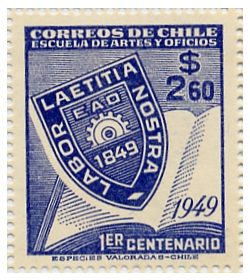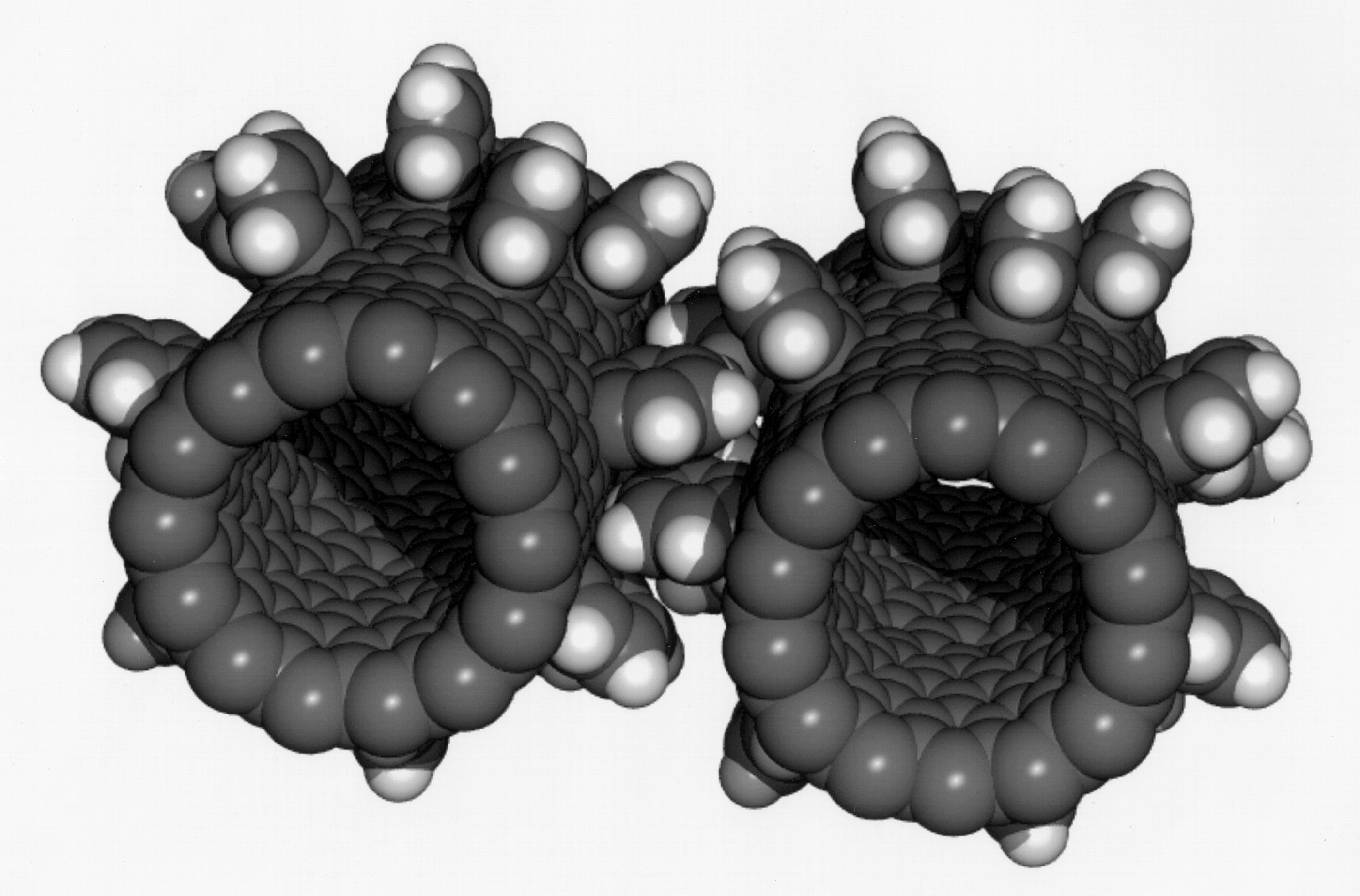|
Dora Altbir
Dora Altbir (born 21 February 1961) is a Chilean physicist in the field of nanoscience and nanotechnology. She was awarded the National Prize for Exact Sciences (Chile) The National Prize for Exact Sciences ( es, Premio Nacional de Ciencias Exactas) was created in 1992 as one of the replacements for the National Prize for Sciences under Law 19169. The other two prizes in this same area are for Natural Sciences an ... in 2019 for her work in the theoretical study of magnetic nanostructures. She is currently a professor at the University of Santiago, Chile. Altbir is director of the Center for the Development of Nanoscience and Nanotechnology (CEDENNA) and director of the ''Dirección de Investigación Científica y Tecnológica'' (DICYT) at University of Santiago, Chile. She is a corresponding member of the Chilean Academy of Sciences. References Chilean women scientists Living people 1961 births Chilean physicists {{Physicist-stub ... [...More Info...] [...Related Items...] OR: [Wikipedia] [Google] [Baidu] |
Pontifical Catholic University Of Chile
The Pontifical Catholic University of Chile (''PUC or UC Chile'') ( es, Pontificia Universidad Católica de Chile) is one of the six Catholic Universities existing in the Chilean university system and one of the two pontifical universities in the country, along with the Pontifical Catholic University of Valparaíso. Founded in 1888, it is also one of Chile's oldest universities and one of the most recognized educational institutions in Latin America. Pontifical Catholic University of Chile has a strong and long-standing rivalry with Universidad de Chile, as they are both widely recognized as the most traditional and prestigious in the country, and one is catholic and the other, secular. This rivalry also translates to sports, especially football. Campuses UC Chile has four campuses in Santiago and one campus in Villarrica. The campuses in Santiago are: * Casa Central (in downtown Santiago) * San Joaquín (in Macul Commune of Greater Santiago) * Oriente (in Ñuñoa Comm ... [...More Info...] [...Related Items...] OR: [Wikipedia] [Google] [Baidu] |
University Of Santiago, Chile
The University of Santiago, Chile (Usach) ( es, Universidad de Santiago de Chile) is one of the oldest public universities in Chile. The institution was born as ''Escuela de Artes y Oficios'' (Spanish: ''School of Arts and Crafts'') in 1849 by Ignacy Domeyko, under the government of Manuel Bulnes. It became ''Universidad Técnica del Estado'' (Spanish: ''Technical University of the State'') in 1947, with various campuses throughout the country. In 1981, as a consequence of a reform on higher education under the dictatorship of Augusto Pinochet, it became what is now known as ''Universidad de Santiago de Chile'', with all activities centered in a single 340,000 m2 campus in the capital Santiago. History The University of Santiago of Chile (USACH) started as the School of Arts and Crafts in 1849. It was born in the mid-20th century and it is the fifth oldest university in Chile. Escuela de Artes y Oficios The Escuela de Artes y Oficios (EAO)(Spanish ''School of Arts and Crafts ... [...More Info...] [...Related Items...] OR: [Wikipedia] [Google] [Baidu] |
Nanoscience
The nanoscopic scale (or nanoscale) usually refers to structures with a length scale applicable to nanotechnology, usually cited as 1–100 nanometers (nm). A nanometer is a billionth of a meter. The nanoscopic scale is (roughly speaking) a lower bound to the mesoscopic scale for most solids. For technical purposes, the nanoscopic scale is the size at which fluctuations in the averaged properties (due to the motion and behavior of individual particles) begin to have a significant effect (often a few percent) on the behavior of a system, and must be taken into account in its analysis. The nanoscopic scale is sometimes marked as the point where the properties of a material change; above this point, the properties of a material are caused by 'bulk' or 'volume' effects, namely which atoms are present, how they are bonded, and in what ratios. Below this point, the properties of a material change, and while the type of atoms present and their relative orientations are still import ... [...More Info...] [...Related Items...] OR: [Wikipedia] [Google] [Baidu] |
Nanotechnology
Nanotechnology, also shortened to nanotech, is the use of matter on an atomic, molecular, and supramolecular scale for industrial purposes. The earliest, widespread description of nanotechnology referred to the particular technological goal of precisely manipulating atoms and molecules for fabrication of macroscale products, also now referred to as molecular nanotechnology. A more generalized description of nanotechnology was subsequently established by the National Nanotechnology Initiative, which defined nanotechnology as the manipulation of matter with at least one dimension sized from 1 to 100 nanometers (nm). This definition reflects the fact that quantum mechanical effects are important at this quantum-realm scale, and so the definition shifted from a particular technological goal to a research category inclusive of all types of research and technologies that deal with the special properties of matter which occur below the given size threshold. It is therefore commo ... [...More Info...] [...Related Items...] OR: [Wikipedia] [Google] [Baidu] |
National Prize For Exact Sciences (Chile)
The National Prize for Exact Sciences ( es, Premio Nacional de Ciencias Exactas) was created in 1992 as one of the replacements for the National Prize for Sciences under Law 19169. The other two prizes in this same area are for Natural Sciences and Applied Sciences and Technologies. It is part of the National Prize of Chile. Jury The jury is made up of the Minister of Education, who calls it, the Rector of the University of Chile, the President of the , a representative of the Council of Rectors, and the last recipient of the prize. Winners * 1993, Servet Martínez and Eric Goles (mathematics) * 1995, Claudio Bunster (physics) * 1997, María Teresa Ruiz (astronomy) * 1999, José Maza Sancho (astronomy) * 2001, (physics) * 2003, Carlos Conca (mathematics) * 2005, (physics) * 2007, (physics) * 2009, Ricardo Baeza Rodríguez (mathematics) * 2011, (mathematics) * 2013, Manuel del Pino (mathematics) * 2015, Mario Hamuy (astronomy) * 2017, Guido Garay Brignardello (astronomy) *2 ... [...More Info...] [...Related Items...] OR: [Wikipedia] [Google] [Baidu] |
Nanostructure
A nanostructure is a structure of intermediate size between microscopic and molecular structures. Nanostructural detail is microstructure at nanoscale. In describing nanostructures, it is necessary to differentiate between the number of dimensions in the volume of an object which are on the nanoscale. Nanotextured surfaces have ''one dimension'' on the nanoscale, i.e., only the thickness of the surface of an object is between 0.1 and 100 nm. Nanotubes have ''two dimensions'' on the nanoscale, i.e., the diameter of the tube is between 0.1 and 100 nm; its length can be far more. Finally, spherical nanoparticles have ''three dimensions'' on the nanoscale, i.e., the particle is between 0.1 and 100 nm in each spatial dimension. The terms nanoparticles and ultrafine particles (UFP) are often used synonymously although UFP can reach into the micrometre range. The term ''nanostructure'' is often used when referring to magnetic technology. Nanoscale structure in bi ... [...More Info...] [...Related Items...] OR: [Wikipedia] [Google] [Baidu] |
Chilean Women Scientists
Chilean may refer to: * Something of, from, or related to Chile, a country in South America * Chilean people * Chilean Spanish * Chilean culture * Chilean cuisine * Chilean Americans See also *List of Chileans This is a list of Chileans who are famous or notable. Economists * Ricardo J. Caballero – MIT professor, Department of Economics * Sebastián Edwards – UCLA professor, former World Bank officer (1993–1996), prolific author and media per ... * {{disambig Language and nationality disambiguation pages ... [...More Info...] [...Related Items...] OR: [Wikipedia] [Google] [Baidu] |
Living People
Related categories * :Year of birth missing (living people) / :Year of birth unknown * :Date of birth missing (living people) / :Date of birth unknown * :Place of birth missing (living people) / :Place of birth unknown * :Year of death missing / :Year of death unknown * :Date of death missing / :Date of death unknown * :Place of death missing / :Place of death unknown * :Missing middle or first names See also * :Dead people * :Template:L, which generates this category or death years, and birth year and sort keys. : {{DEFAULTSORT:Living people 21st-century people People by status ... [...More Info...] [...Related Items...] OR: [Wikipedia] [Google] [Baidu] |
1961 Births
Events January * January 3 ** United States President Dwight D. Eisenhower announces that the United States has severed diplomatic and consular relations with Cuba (Cuba–United States relations are restored in 2015). ** Aero Flight 311 (Koivulahti air disaster): Douglas DC-3C OH-LCC of Finnish airline Aero crashes near Kvevlax (Koivulahti), on approach to Vaasa Airport in Finland, killing all 25 on board, due to pilot error: an investigation finds that the captain and first officer were both exhausted for lack of sleep, and had consumed excessive amounts of alcohol at the time of the crash. It remains the deadliest air disaster to occur in the country. * January 5 ** Italian sculptor Alfredo Fioravanti marches into the U.S. Consulate in Rome, and confesses that he was part of the team that forged the Etruscan terracotta warriors in the Metropolitan Museum of Art. ** After the 1960 military coup, General Cemal Gürsel forms the new government of Turkey (25th gov ... [...More Info...] [...Related Items...] OR: [Wikipedia] [Google] [Baidu] |
.jpg)


